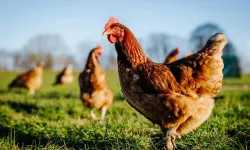Researchers analyzed the genomes of coffee plants from around the world to create a genealogy of the plant known as Coffea arabica.
"By using the genetic information of plants living today and going back in time, we have painted the most accurate picture possible of Arabica's long history and determined how the cultivars grown today relate to each other," says Victor Albert of the University at Buffalo, who co-authored the study.
The researchers, who analyzed 39 varieties of Arabica, also had a sample from the 1700s. Swedish naturalist Carl Linnaeus had used this plant to give the species its scientific name.
The study, published on Monday in the peer-reviewed journal Nature Genetics, found that C. arabica originated as a natural hybridization of two varieties, Coffea canephora and Coffea eugenioides.
Albert says of this finding:
"In other words, the hybridization that produced Arabica was not something humans did."
1 million to 610 thousand years ago
Scientists used a computer model to determine when this event, which occurs when two sets of chromosomes come from each of these two varieties, occurred. They found that Arabica's oldest population bottleneck was 610,000 years ago. A population bottleneck means that, for various reasons, the number of a population has dropped drastically.
For this reason, the researchers say that the plant must have formed before this period, pointing to 1 million to 610 thousand years ago.
Arabica, the world's most popular coffee, already accounts for about 60 percent of the global coffee market.
















